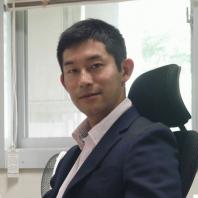![]()
![]()
Research Support Office Research Advancement Division. Tokyo University of Agriculture and Technology
| TEL | +81-42-367-5944 |
|---|---|
| FAX | +81-42-367-5946 |
This program is supported by MEXT’s scientific technology human resource development fee grant, "Program to Disseminate Tenure Tracking System".
Home > Tenured Faculties > Ohashi Hidenori

Ohashi Hidenori

| Affiliation | Institute of Engineering |
|---|---|
| Division | Division of Applied Chemistry |
| Research field | Chemical engineering, Transport property, Material design |
| Keyword(S) | Continuous protein refolding system, Fuel cell, Diffusion in polymer |
| Url | http://web.tuat.ac.jp/~ohashilab/ |
| Research experience | ・Apr.2008-Feb. 2016: Assistant Professor, Chemical Resources Laboratory, Tokyo Institute of Technology |
|---|---|
| Educational background | ・2003: School of Engineering, The University of Tokyo (Bachelor of Engineering) |
| Awards | * The latest information is shown at the member's website. |
| Selected papers and publications | * The latest information is shown at the member's website. |
Our living world is not equilibrium world but non-equilibrium one, which includes mass and heat transport inevitably. To effectively separate and acquire usable energy and substances in such world, it is indispensable to acquire the information of non-equilibrium physical property, that is to say, transport property. On the other hand, the acquisition and understanding of the transport property is delayed to a large extent, compared with the knowledge as for equilibrium and reaction. Such circumstance is one of the bottleneck of the present technological development.
The performance of chemical systems are often impaired by mass transfer as a rate determining step; e.g. oxygen diffusion in fuel cell systems. But on the other hand, the rate determining step can be resolved by analyzing the system concerning transport phenomena, and subsequently mitigating the diffusion limited phenomena.
In my laboratory, by utilizing such legitimate device design, chemical systems in energy field and life-science field, which can contribute to the society will be developed; such as continuous protein refolding systems, fuel cell systems, water vapor recovering systems, and so on. Of course, the knowledge of the transport property itself is of significance as noted above. Therefore we will approach to facile and universal methods of diffusivity measurement and the prediction model for the diffusivity.
As a researcher in university, two points are of significance I guess; one is to proceed own research and the other is to educate students with own mind and methodology (In my case, please see above and below respectively). However, compatible execution of the two normally requires sufficient experiment. The TUAT tenure-track program kindly offers the opportunity to us to get accustom to them directly and indirectly by mitigating part of lectures, supporting office functions, and arranging a mentor. The system also provides the opportunity to us to interact with other tenure track members in different research fields, which inspires us novel, interdisciplinary, and challenging collaborative research themes.
As for the research perspective, please see the “Summary of Research”. As for the educational perspective, my concept is “one can drastically grow up, when he/she touches with new notions”. One of the important and new notions for faculty 4th grade and graduate students is to approach to the questions not solved yet, and the research is one of the most suitable subjects for that. Therefore, three years are enough long for students to dramatically grow up.
In addition to the research skills, I would like to educate “persons who can educate other persons”. Through successive education of others, persons connecting generations will exponentially spread and can even contribute to the world growth, which can never be attained by only one person.